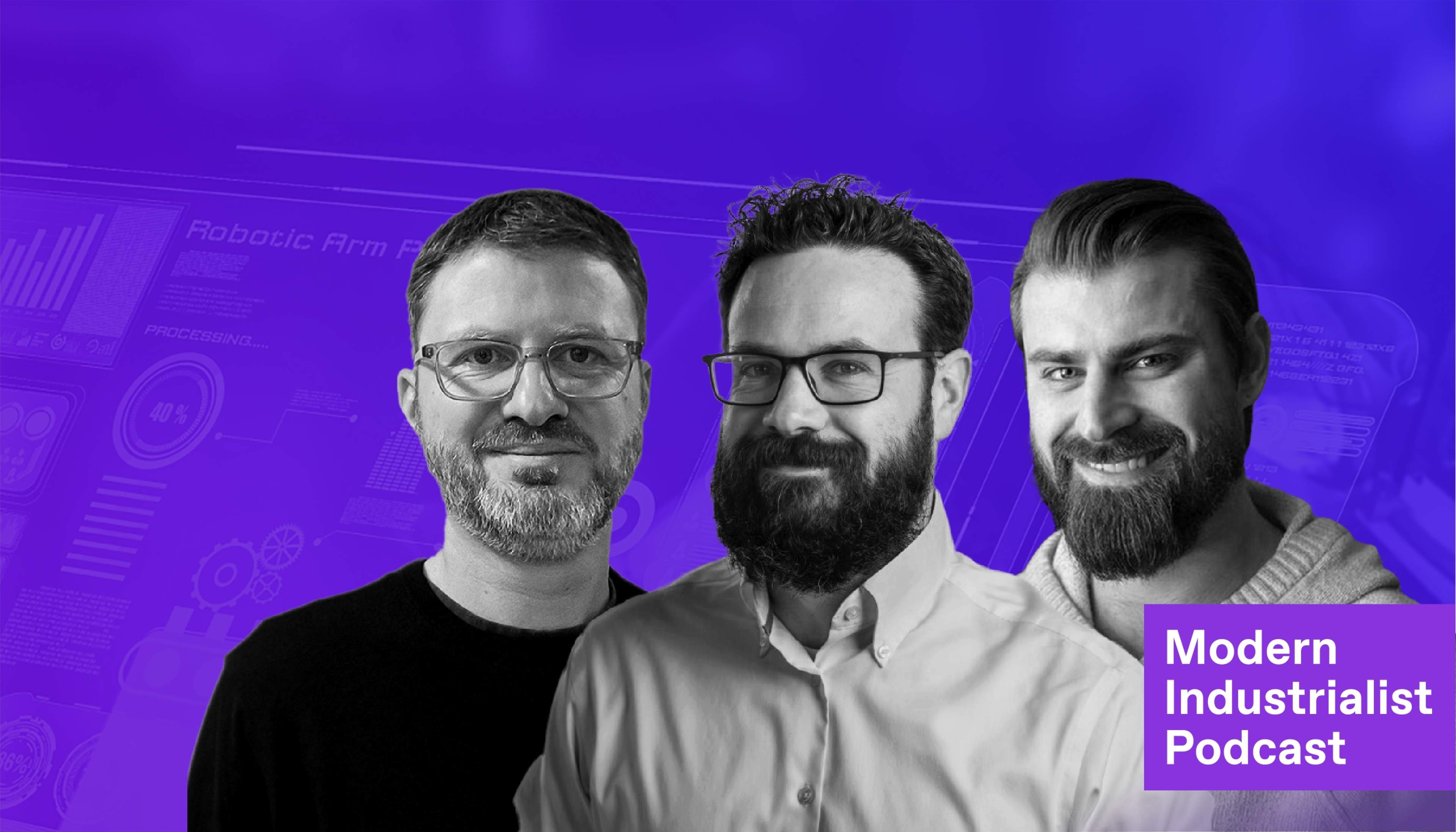The future of manufacturing workforce development with AR / VR
Modern Industrialist Podcast

Powered by RedCircle
The episode:
Immersive technology is revolutionizing workforce training, and augmented reality (AR) and virtual reality (VR) are leading the way. From reducing downtime in manufacturing to enhancing hands-on learning without real-world risks, AR/VR is shaping the future of industrial operations.
In this live episode of the Modern Industrialist Podcast, Jason Hehman is joined by Ed LaFoy, Lead Engineer specializing in spatial computing and XR, and Patrick DeMichael, TXI’s Strategy Practice Lead.
The conversation dives into real-world case studies, including how DHL increased efficiency with AR-enabled logistics and how HABCO Industries leveraged AR to streamline a time-consuming aerospace manufacturing process. The team also examines the role of Apple Vision Pro in industrial settings and what it will take for AR/VR hardware to reach mainstream adoption.
Whether you're curious about the potential of AR/VR or actively considering it for workforce training, this episode unpacks the opportunities, challenges, and strategies that will define its role in Industry 4.0.
The podcast:
Presented by TXI, The Modern Industrialist Podcast is for technology-focused manufacturing and logistics leaders looking to gain a competitive edge with Industry 4.0 transformation. Join our host Jason Hehman as he brings together experts from companies blazing the path for the IIoT revolution. Topics range from advice to success stories, use cases, solutions, and more.
The expert:
Podcast Host: Jason Hehman, Industry 4.0 Vertical Lead and Client Partner at TXI
Co-host: Ed LaFoy, Spatial Computing and XR Lead at TXI and Patrick DeMichael, Strategy Lead at TXI
Book a meeting with Jason
Summary and themes explored in this episode:
Evolution of AR/VR Technology
A. AR and VR technologies have developed significantly over the past decade:
Microsoft HoloLens (2015) paved the way for enterprise AR applications.
Pokémon Go (2016) mainstreamed AR for consumer applications.
Facebook (Meta) invested heavily in VR (2016), later shifting focus to AI.
NVIDIA Omniverse and Snapchat Spectacles continued innovation in AR/VR.
Apple Vision Pro (2024) launched but saw mixed reactions due to form factor and adoption challenges.
Samsung is rumored to enter the AR/VR space, signaling continued investment in the sector.
Why AR/VR Continues to Hold Industry Interest
A. Despite mixed adoption rates, AR/VR bridges digital and physical worlds, creating valuable applications in manufacturing, logistics, and workforce training.
B. Primary drivers for AR/VR adoption in industrial settings:
Enhanced training – Safer, hands-on learning without real-world risks.
Operational efficiency – AR-assisted tasks speed up processes.
Cost reduction – Reducing downtime in maintenance and production.
Concrete Use Cases of AR/VR in Industry
A. DHL’s AR-Enabled Warehousing
Implemented a vision-picking system that improved efficiency by 15%, demonstrating AR’s potential in logistics and sorting.
Previously, aligning stencil stickers on aerospace components took hours due to precise jig placement.
Using AR, workers could visualize exact placements, reducing setup time significantly.
This example demonstrates AR’s potential to simplify precision tasks and reduce training barriers.
AR overlays allow workers to compare real-time product outputs with digital specifications, leading to higher accuracy and quality control.
AR-assisted QA is particularly useful for high-mix, low-volume production, where manual checks are cumbersome.
VR is used for training technicians on complex machinery while keeping production lines operational.
Simulating dangerous environments allows workers to practice emergency protocols without physical risk.
Helps in developing muscle memory and procedural training.
Companies use AR to prototype and refine designs, reducing costly reworks.
Remote maintenance support allows technicians to access real-time digital overlays instead of relying on paper manuals.
Apple Vision Pro & AR Training Applications
A. The Apple Vision Pro offers:
Enhanced hand tracking (pinch gestures for natural interaction).
Better immersion and spatial awareness (motion-responsive UI).
Higher fidelity in AR applications for precise industrial training.
High cost per unit ($3,500+ per device).
Limited multi-user functionality – Devices are optimized for single users.
Form factor concerns – Heavy headsets limit mobility for factory workers.
Developing AR/VR Training Programs: Foundational Requirements
A. Organizations interested in AR/VR must first establish a strong knowledge management system before integrating immersive tech.
B. Key foundational elements:
Standard Operating Procedures (SOPs) in digital formats.
Structured training materials that can be adapted for AR/VR.
CAD files and 3D assets for interactive training models.
Practical Demonstration: VR-Based Automotive Training
A. Ed LaFoy built an interactive VR demo showcasing a tire rotation simulation using the Apple Vision Pro.
B. The experience allowed users to physically interact with a virtual car, reinforcing real-world tasks in an immersive setting.
C. This highlights how industrial training can be revolutionized by AR/VR.
Challenges & Future of AR/VR in Industry
A. While AR and VR show promise, the hardware must evolve to reach mass adoption.
B. Challenges include:
Form factor & comfort – Devices need to be lighter and more ergonomic.
Battery life improvements – Current headsets don’t last long enough for extended training sessions.
Scalability – Businesses need multi-user capabilities to justify investment.
Smaller, more powerful headsets (Apple Vision Pro 2.0, Samsung’s rumored AR glasses).
Better industry-specific applications tailored for factory floors and maintenance teams.
Increased AI integration to improve training personalization and automation.
Final Takeaways
A. AR/VR is an evolving field, but organizations must lay groundwork first (strong digital knowledge base).
B. Industries adopting AR/VR today will see efficiency gains in training, quality control, and maintenance.
C. The Apple Vision Pro is promising but not yet factory-ready—future iterations will drive broader adoption.
D. Companies should assess operational challenges first before deciding if AR/VR is the right fit.
Produced by NOVA
Published by Jason Hehman , Patrick Turley in podcasts

Let's shape your insights into experience-led data products together.


